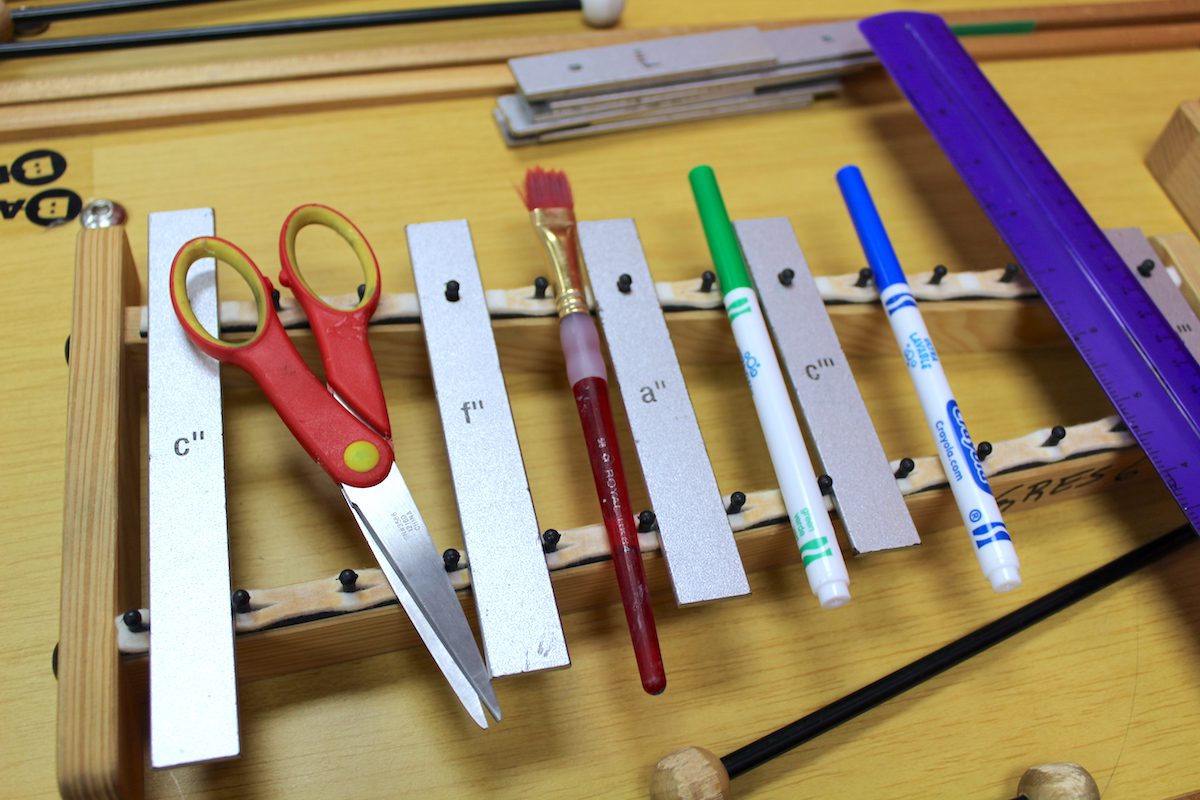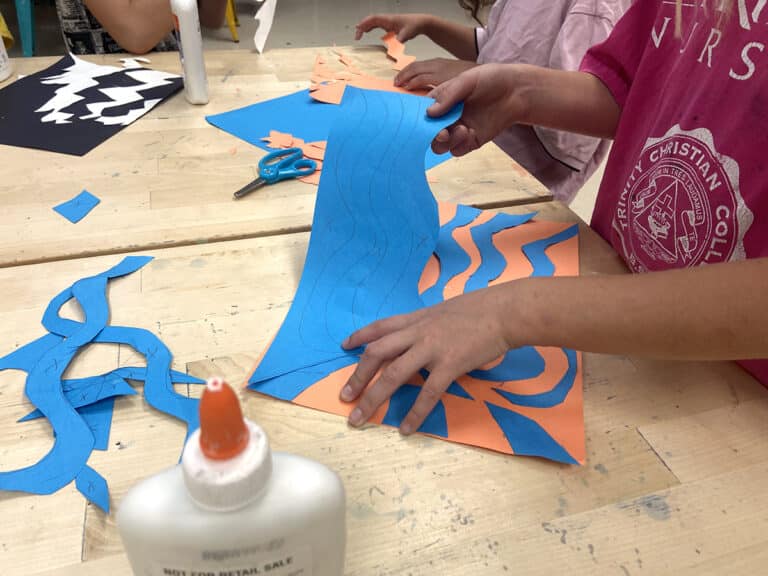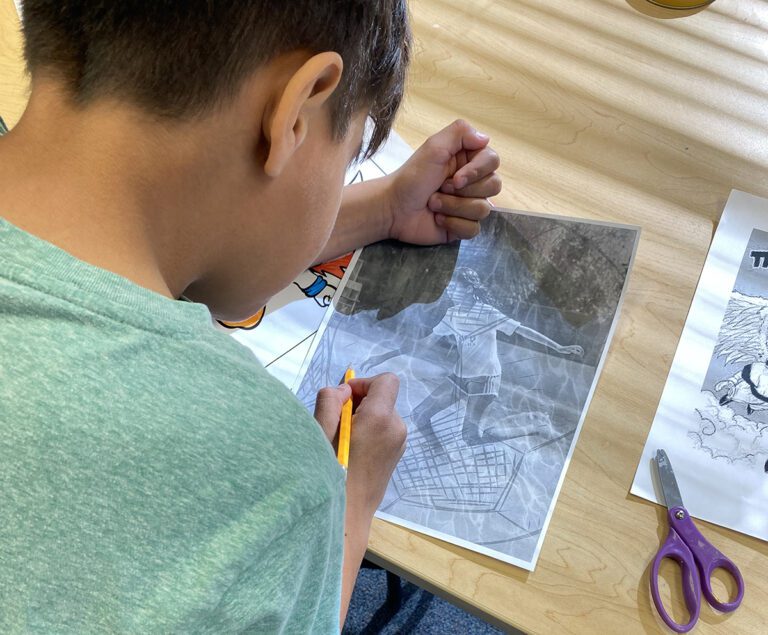Administrators frequently ask art teachers to make cross-curricular connections in their classrooms. But what is really driving this request? I suspect it’s the knowledge that in art, students use higher-order thinking skills and are highly engaged. What better place to infuse math and reading to bolster test scores? But what about “art for art’s sake?”
What if we DID collaborate, but for the benefit of our own ART curriculum?
Your perfect collaborator is probably teaching right down the hall in the music room. Think about it: your music teacher knows all your students, is trying to make music history come alive, is introducing the “elements and principles” of music, and is helping the kids find their own voices as they learn to compose. Sounds kind of familiar, huh?
Today I’d like to share how you can make this dream team work in your school.
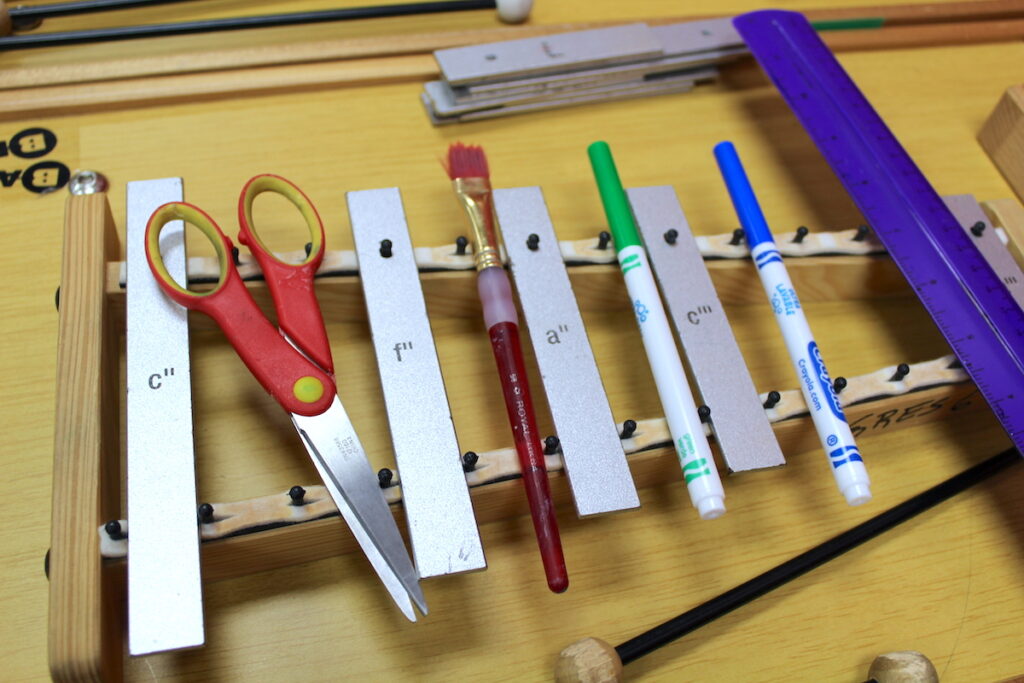
Start with a conversation.
During a late night lull in parent teacher conferences, I was decompressing in the art room with my music teacher buddy. He was looking at my “elements and principles” bulletin board and commented that we seemed to teach a lot of the same content. Line, shape, contrast, texture, repetition, variety, and color, all of these are concepts that also appear in music. After we realized how much we had in common, the opportunity to collaborate for the benefit of our own subject areas became obvious. Thus, M-ART (Music-Art) was born. (Listen, friends, I pushed for AR-USIC, but it was just too awkward.)
Find common ground that supports BOTH curriculums.
This can be tricky at first because we are so used to conceptualizing how art could help other classes. It’s difficult to identify how another class could help us! You might want to begin by brainstorming the weaker spots in your own professional practice.
For me, it was contour line. My previous year’s lessons just weren’t that exciting, and I was hoping to develop something fresh to excite and motivate my students. My music teacher was working on composition, and he needed some support helping his students conceptualize a spatial awareness of the musical staff.
In this case, our common ground was a metaphor that helps both subjects. A musical composition is like a contour line… once it starts it is continuous, creating a sound and a shape, until it stops.
Create a project that serves both subjects equally.
Collaboration works best when both curricular areas benefit. In this case, our project helped our students deepen their understanding in both art and music.
In art, we drew the “contour” of a song or musical phrase. We created a staff on cardboard, using yarn. (Side note, this project could have easily been done on paper, but creating a staff out of yarn is A LOT like creating a warp for weaving, so why not reinforce that learning?!) Then, we used a piece of yarn and glue to create the contour line. We talked a little about how that line would represent notes going up or down, but focused mainly on the beauty of the shape it was creating. Eventually, we used the yarn and foil relief technique shared here on AOE.
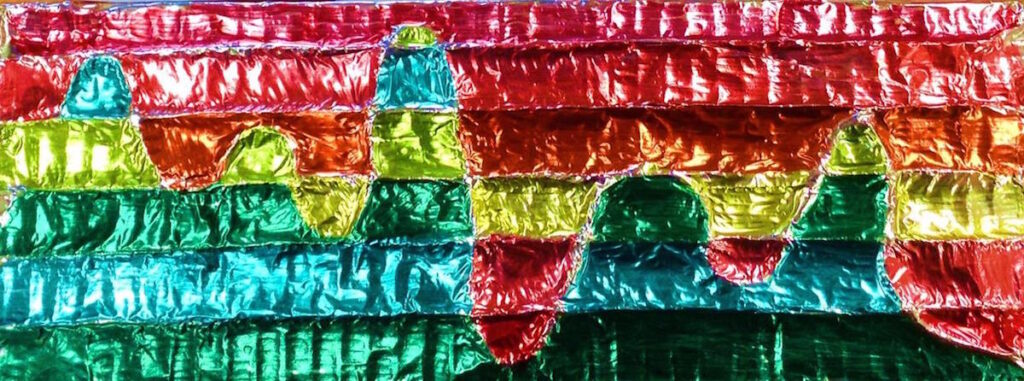
It was a quick, one-class introduction to our upcoming blind contour project, and the kids loved it! Starting with an abstract contour line seemed to remove a lot of the blind contour angst I usually hear. Students were more open and ready for blind contour still lifes the next week.
In music, the teacher used the students’ art projects to help them understand that there is an arc (or multiple arcs) within a musical phrase. Eventually, he had the students use a composition app on an iPad to record the “sound” their artwork made. Each time the yarn intersected a line on the staff, they recorded the corresponding note. These saved audio files could be accessed later, using a QR code attached to the final project.
Implement the projects at the same time.
The secret to our success with this project was simultaneous implementation. The music teacher and I were using the same vocabulary, the same concepts, and directly referencing what the other was doing. The students were being exposed to the same idea in multiple ways, and this really helped solidify their learning and make a higher lever connection in their minds.
You are probably already using music as a teaching tool. During your career as an art teacher, I’ll bet at some point you have put on some music and asked the kids to paint what they heard. But if you can create a real conceptual collaboration with your music teacher, you can dive even deeper and benefit both subject areas! Good luck!
What projects have you partnered with your music teacher to teach?
What other subject areas (besides music) do you see as benefiting your art program?
If you’d like to hear even more from Lindsey, be sure to join us for the Winter 2017 Art Ed Now Conference. Lindsey will be sharing how to make the most of every minute in the art room with several easy-to-implement strategies. Click here to learn more!
Magazine articles and podcasts are opinions of professional education contributors and do not necessarily represent the position of the Art of Education University (AOEU) or its academic offerings. Contributors use terms in the way they are most often talked about in the scope of their educational experiences.
